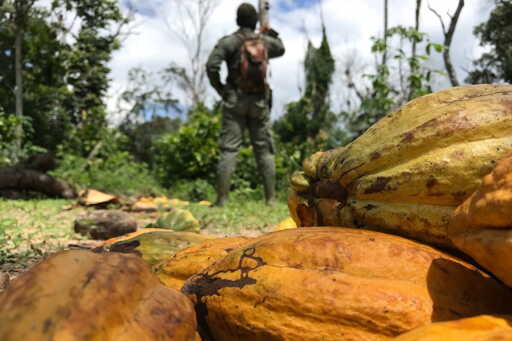A rush to plant cacao in southeastern Liberia is destroying large tracts of rainforest. According to satellite data as well as interviews with local environmental advocates and government officials, the establishment of new plantations in regions that border Côte d’Ivoire is causing extensive deforestation and spurring conflicts over land. While some of the plantations are old enough to have begun producing cacao already, satellite imagery collected by Global Forest Watch indicates that forest loss in Grand Gedeh county and other parts of southeastern Liberia spiked dramatically in 2025, suggesting the trend is accelerating. Liberia’s remote southeast is one of its most densely forested regions, but also one of its poorest. Officials in Grand Gedeh said the rapid expansion of cacao farming there is being driven by local community leaders and political elites, who have invited migrant laborers from Côte d’Ivoire — often referred to as “Burkinabés” due to their origin in Burkina Faso — to help develop them. “The town chief will say, ‘These are my people, I own this town, we have our forest and there is nothing doing with it. So we are giving it out to the Burkinabé people to give us money,’” Yei Neagor, an official with Liberia’s Forestry Development Authority, told Mongabay. According to Liberian immigration authorities, nearly 50,000 workers have crossed the border into Grand Gedeh in recent years, a large figure for a county that had a population of just over 200,000 people as of 2022. “The situation is alarming. They are really…This article was originally published on Mongabay
From Conservation news via this RSS feed


